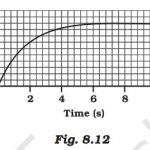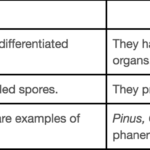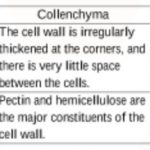Class 9 Science Chapter 9 Force and Law of Motion NCERT Solutions Question Answers Page 118 1.Which of the following has more inertia: (a) a rubber ball and a stone of the same size? (b) a bicycle and a train? (c) a five rupees coin and a one-rupee coin? Answer : Inertia is the measure of mass of the body.The greater is the mass of a body, greater is its … [Read more...] about Chapter 9 Force and Law of Motion
science
Chapter 8 Motion
Class 9 Science Chapter 8 Motion NCERT Solutions Page 100 1. An object has moved through a distance. Can it have zero displacement? If yes, support your answer with an example. Answer: Displacement is the shortest distance between initial and final position of body along with direction.Yes, an object moved through a distance can have zero displacement. For Ex: Suppose a … [Read more...] about Chapter 8 Motion
Chapter 7 Diversity in Living Organisms
Class 9 Science Chapter 7 Diversity in Living Organisms NCERT Solutions Page 80 1. Why do we classify organisms? Answer: There are millions of organism or species on earth. It is very difficult to study all of them one by one. The method of arranging organism into groups or sets on the basis of similarities and differences is called classification. Classification … [Read more...] about Chapter 7 Diversity in Living Organisms
Chapter 6 Tissues
Class 9 Science Chapter 6 Tissues NCERT Solutions Page 69 1. What is a tissue? Answer: Tissue is a group of cells that are similar in structure and are organised together to perform a specific task. 2. What is the utility of tissues in multi-cellular organisms? Answer: In multicellular organisms, cells are grouped to form tissues. These tissues are specialised to … [Read more...] about Chapter 6 Tissues
Chapter 3 Atoms and Molcules
Class 9 Science Chapter 3 Atoms and Molecules NCERT Solutions Page 32, 33 1. In a reaction, 5.3 g of sodium carbonate reacted with 6 g of acetic acid. The products were 2.2 g of carbon dioxide, 0.9 g water and 8.2 g of sodium acetate. Show that these observations are in agreement with the law of conservation of mass. sodium carbonate + acetic acid → sodium acetate + carbon … [Read more...] about Chapter 3 Atoms and Molcules



